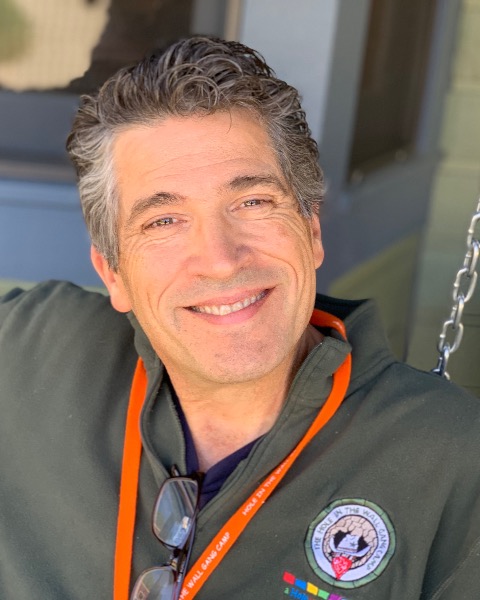Advocacy Project
Program: Council on Children and Disasters
P3A228: Vermont's Multi-agency Advocacy, Collaboration, and Response to the Pediatric Respiratory Surge of 2022. our Rural State's Approach That Made a Difference - To Our Patients, Our EMS Colleagues, and Our Critical-access Hospitals
Sunday, October 22, 2023
4:15 PM - 4:45 PM US EDT
Location: Walter E. Washington Convention Center, Exhibit Hall A
Background: The Pediatric Respiratory Surge of 2022 due to the unprecedented prevalence of RSV led to overwhelming pediatric hospitalizations. In Vermont we have one hospital with a PICU (that was nearing capacity) and 8 critical-access hospitals and 5 community hospitals that have no or limited pediatric inpatient capabilities. We needed to devise a plan to care for and transport these critical patients to our PICU capable hospital and/or care for the moderately ill pediatric patients on site.
1) High Flow Nasal Canula (HFNC) therapy has been shown to be the preferred method to support infants and children with moderate to severe respiratory distress from RSV and other respiratory viruses. HFNC units have only been stocked and used in our one-and-only academic medical center and our one-and-only pediatric critical care transport unit. This current RSV surge highlighted our need to employ HFNC in our critical access hospital EDs and in more inter-facility transport units.
2) Also, an assessment of our Critical-Access Hospitals revealed the need and desire for pediatric nurses and pediatric respiratory therapists.
Project Description: At the onset of the Pediatric Respiratory Surge we convened a coalition of Pediatric Healthcare stakeholders. We met regularly, shared information, and determined the best way to ameliorate the situation was to promote #1 and #2 noted above - HFNC therapy and pediatric nursing and respiratory therapy in our critical access hospitals. Within 5 weeks of initial discussions:
#1 -8 HFNC ventilators were purchased for use by Paramedic EMS units. Specialty training and protocols were adapted. EMS units capable of Inter-facility transport of children on HFNC devices increased from 2 to 10.
#2 -the State contracted to provide 4 pediatric nurses and 4 pediatric respiratory therapists to VT hospitals to provide support during the ongoing RSV surge.
Discussion: We convened a multi-agency coalition to identify solutions to the Pediatric Respiratory Surge that threatened to overwhelm our medical systems in Vermont. We improved EMS transport of children using HFNC by purchasing the ventilators and providing specialty training. The state EMS protocol was updated to allow for this change in paramedic responsibilities. Second, the Vermont Department of Health authorized and funded specialty pediatric nursing and pediatric respiratory therapists for a 4- week period to be used on a rotating basis by our critical-access hospitals.
Conclusion: Vermont is a small, rural state in which much of our emergent pediatric care is provided by our community and critical-access hospitals that were becoming overwhelmed by the Pediatric Respiratory Surge of 2022. The Pediatric Healthcare stakeholders in the state came together quickly and efficiently and executed a plan that immediately and positively impacted the healthcare of our pediatric patients. In addition to improved patient care, we also empowered our EMS colleagues and supported our critical-access hospitals.
1) High Flow Nasal Canula (HFNC) therapy has been shown to be the preferred method to support infants and children with moderate to severe respiratory distress from RSV and other respiratory viruses. HFNC units have only been stocked and used in our one-and-only academic medical center and our one-and-only pediatric critical care transport unit. This current RSV surge highlighted our need to employ HFNC in our critical access hospital EDs and in more inter-facility transport units.
2) Also, an assessment of our Critical-Access Hospitals revealed the need and desire for pediatric nurses and pediatric respiratory therapists.
Project Description: At the onset of the Pediatric Respiratory Surge we convened a coalition of Pediatric Healthcare stakeholders. We met regularly, shared information, and determined the best way to ameliorate the situation was to promote #1 and #2 noted above - HFNC therapy and pediatric nursing and respiratory therapy in our critical access hospitals. Within 5 weeks of initial discussions:
#1 -8 HFNC ventilators were purchased for use by Paramedic EMS units. Specialty training and protocols were adapted. EMS units capable of Inter-facility transport of children on HFNC devices increased from 2 to 10.
#2 -the State contracted to provide 4 pediatric nurses and 4 pediatric respiratory therapists to VT hospitals to provide support during the ongoing RSV surge.
Discussion: We convened a multi-agency coalition to identify solutions to the Pediatric Respiratory Surge that threatened to overwhelm our medical systems in Vermont. We improved EMS transport of children using HFNC by purchasing the ventilators and providing specialty training. The state EMS protocol was updated to allow for this change in paramedic responsibilities. Second, the Vermont Department of Health authorized and funded specialty pediatric nursing and pediatric respiratory therapists for a 4- week period to be used on a rotating basis by our critical-access hospitals.
Conclusion: Vermont is a small, rural state in which much of our emergent pediatric care is provided by our community and critical-access hospitals that were becoming overwhelmed by the Pediatric Respiratory Surge of 2022. The Pediatric Healthcare stakeholders in the state came together quickly and efficiently and executed a plan that immediately and positively impacted the healthcare of our pediatric patients. In addition to improved patient care, we also empowered our EMS colleagues and supported our critical-access hospitals.

David Nelson, MD (he/him/his)
Attending Physician Pediatric Emergency Medicine
University of Vermont Medical Center
University of Vermont, Larner College of Medicine
Burlington, Vermont

.png)
